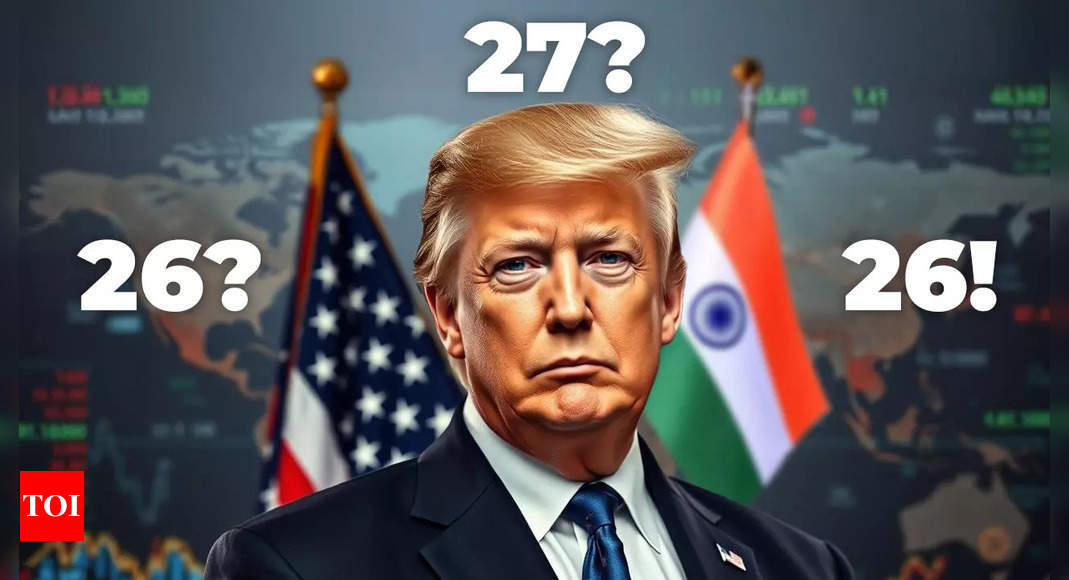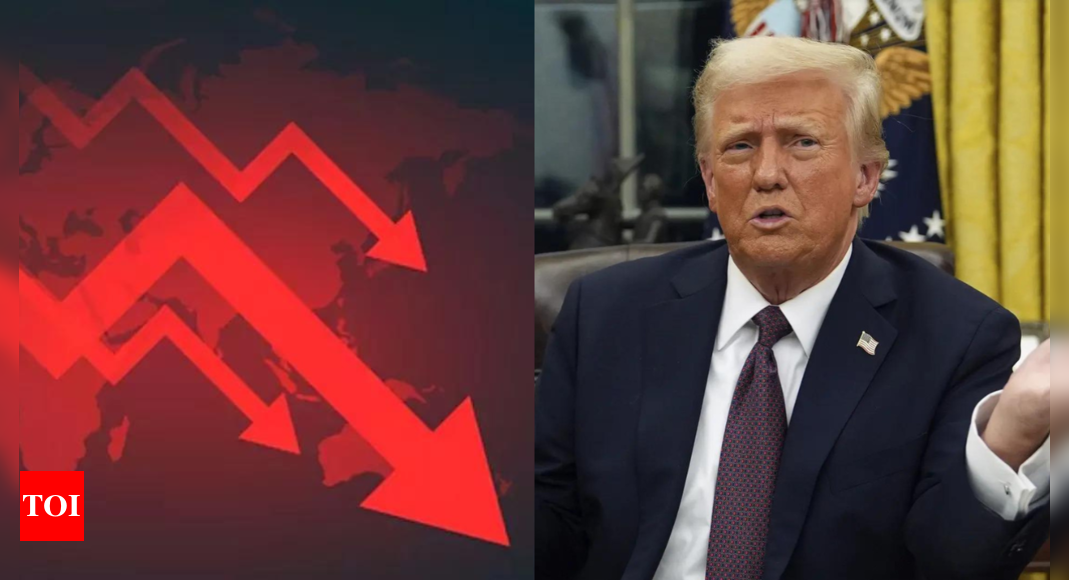Is it 26% or 27%? Donald Trump’s reciprocal tariffs on India revised downward to 26% in new White House document – The Times of India

Is it 27% or 26% – what’s the reciprocal tariff announced by US President Donald Trump on India? It appears that India will face a 26% tariff, and not 27% as was originally published in the White House annexure.
Multiple countries preparing for US reciprocal tariffs faced uncertainty regarding their specific rates on the initial day of Donald Trump’s tariff implementation, whilst simultaneously preparing for economic consequences.
Bloomberg’s analysis of published data revealed discrepancies between the White House annex’s listed future reciprocal tariff rates and the charts displayed during Trump’s “Liberation Day” announcement in the Rose Garden. For 14 economies, the annex rates were more than the chart figures by precisely one percentage point.
The White House subsequently revised the annex rates downward on Thursday to align with the lower figures originally presented in Trump’s display charts, the report said.
Also Read | Donald Trump announces 26% ‘discounted’ reciprocal tariff on India: What will be the impact and is Indian economy relatively insulated?
In the implementation document, India’s tariff was initially specified as 27%, differing from Trump’s earlier indication of 26%, before being adjusted downward to 26%. South Korea’s rate shifted between 25% and 26% across different documents, ultimately settling at 25%. Several other nations experienced rate variations, including Botswana, Cameroon, Malawi, Nicaragua, Norway, Pakistan, the Philippines, Serbia, South Africa, Thailand, Vanuatu, and the Falkland Islands.
India has called the reciprocal tariffs a ‘mixed bag’ and not a ‘setback’. India and the US are currently negotiating a trade deal which is likely to be finalised later this year.
The executive order implementing Trump’s reciprocal tariff policy stipulates that all US trading partners begin with a universal 10% tariff from April 5. Subsequently, after four days, only the nations listed in the annex would see their rates increase to the levels specified in that document.
A White House representative confirmed that the rates specified in the annex implementation document are the ones that will be implemented.
Also Read | India’s first reaction on Donald Trump’s 26% reciprocal tariffs: ‘It’s mixed bag, not setback…’
Furthermore, certain overseas territories and dependencies of major nations, which were initially presented in the White House charts with distinct tariff rates from their governing countries, are absent from the annex document.
Reunion, situated in the Indian Ocean between Mauritius and Madagascar and administered by France, was initially shown with a 37% rate in Trump’s reciprocal tariff charts but was excluded from the formal annex.
Similarly, Saint Pierre and Miquelon, a French territory near Canada, and Norfolk Island, an Australian possession located two hours’ flight east of Brisbane, were omitted from the tariffs annex. As an EU member state, France faces a 20% reciprocal tariff, whilst Australia is subject to the global minimum rate of 10%.




